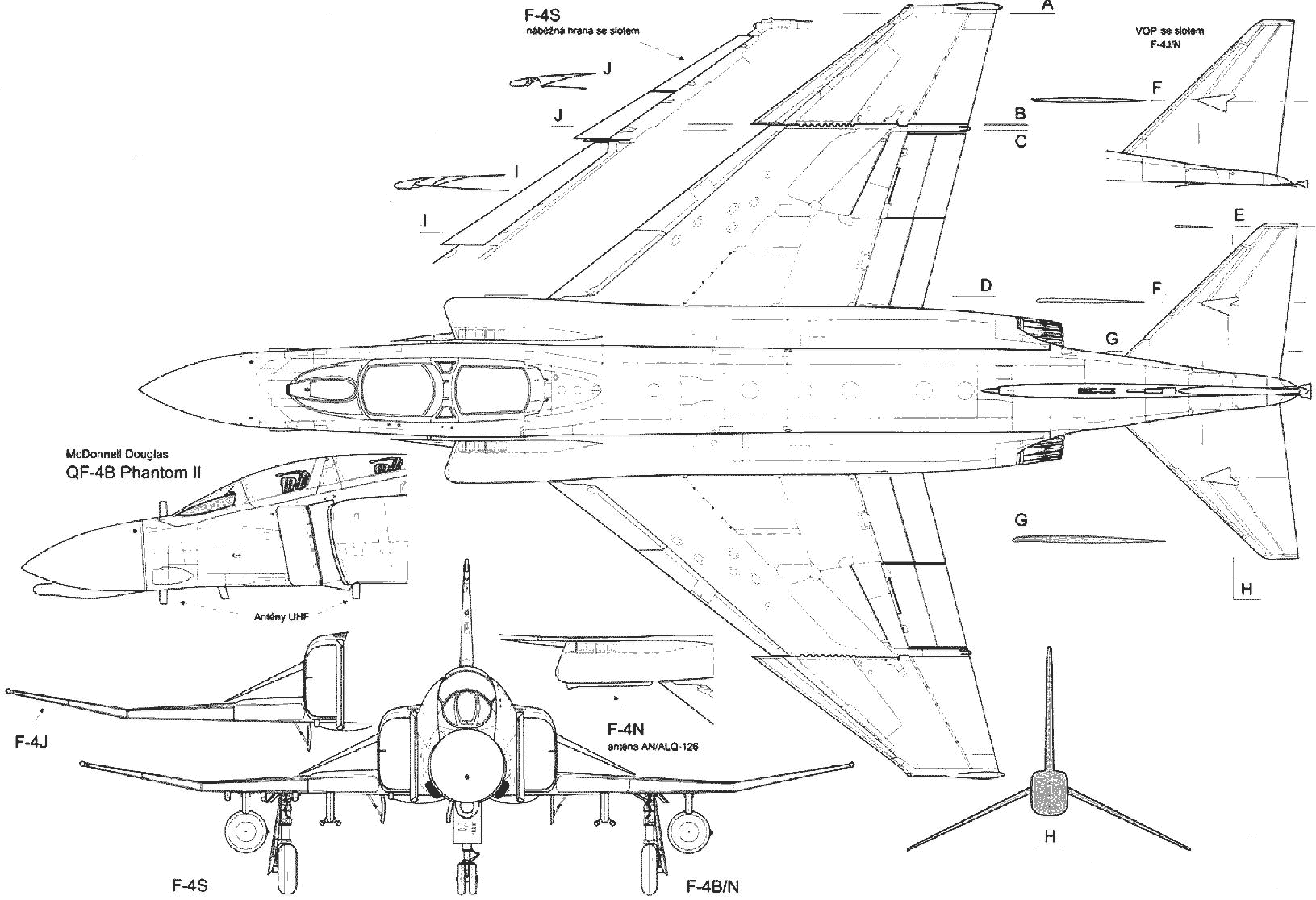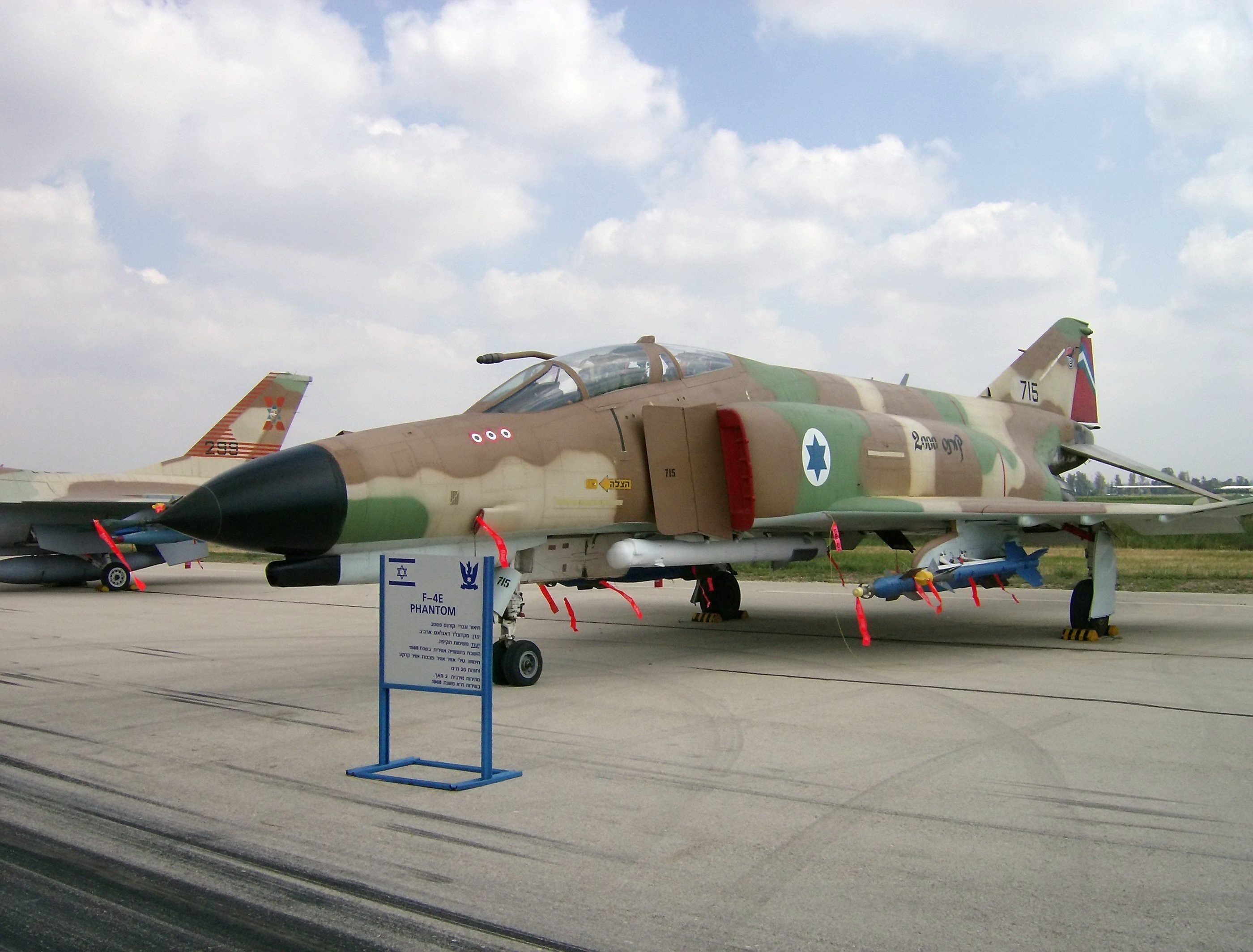F 4 E - Is an American two-seat tandem two-weather long-range all-weather supersonic jet fighter-bomber that was developed by McDonnell Aircraft for the United States Navy.
Before being adopted by the US Marine Corps and US Air Force, and by the mid-1960s it had become a major part of their airborne arsenal.
F 4 E
Production of the Phantom continued from 1958 to 1981, with a total of 5,195 aircraft built, making it the most-produced American supersonic military aircraft in history and cementing its position as the iconic fighter of the Cold War.
Mcdonnell Douglas Yf 4e Phantom Ii > National Museum Of The United States Air Force™ > Display
The Phantom is a huge fighter with a top speed of over Mach 2.2. It can carry more than 18,000 pounds (8,400 kg) of weapons on nine external suspension assemblies, including air-to-air missiles, air-to-surface missiles, and various bombs. The F-4, like other interceptors of the time, was originally designed without an internal cannon. Later models used the M61 Vulcan swivel gun. Since 1959, the aircraft has set 15 world records for distance in flight,
The F-4 was used extensively during the Vietnam War. It served as the primary air superiority fighter for the US Air Force, Navy, and Marine Corps and became crucial in ground attack and aerial reconnaissance roles late in the war. During the Vietnam War, a US Air Force pilot, two Weapons Systems Officers (WSOs),
One US Navy pilot and one Radar Interceptor (RIO) went ace, scoring five mid-air kills on their fighters.
The F-4 continued to be the mainstay of US military aviation throughout the 1970s and 1980s, gradually being replaced by more modern aircraft such as the US Air Force's F-15 Eagle and F-16 Fighting Falcon, the US Navy's F-14 Tomcat and the F/A-18 Hornet in the US Navy and US Marine Corps.
Mcdonnell Douglas F 4 Phantom Ii Blueprint
The F-4 Phantom II continued to be used by the US in reconnaissance roles and to counter enemy air defenses in the 1991 Persian Gulf War, finally retiring from service in 1996.
It was also the only aircraft used by both the US Air Force Thunderbirds (F-4E) and US Navy Blue Angels (F-4J) demonstration flight groups.
The F-4 is also operated by the armed forces of 11 other countries. Israeli Ghosts have seen massive combat action in several Arab-Israeli conflicts, while Iran used its large fleet of Ghosts, acquired before the fall of the Shah, in the Iran-Iraq War. As of 2021, 63 years after its first flight, the F-4 remains in service with the air forces of Iran, South Korea, Greece, and Turkey. The aircraft recently operated against the Islamic State group in the Middle East.

In 1952, McDonnell's head of aerodynamics, Dave Lewis, was appointed by CEO Jim McDonnell as the company's initial head of design.
Mcdonnell Douglas F 4e Phantom Ii Early Production Tamiya 60310
With no new aircraft to compete with, an internal study concluded that the Navy had the greatest need for a new and different type of aircraft: the attack aircraft.
In 1953, McDonnell Aircraft began revising its naval F3H Demon, seeking increased capability and better performance. The company developed several projects, including a variant on the Wright J67 milling engine,
The powerful version of the J79 promises a top speed of Mach 1.97. On September 19, 1953, McDonnell approached the US Navy with a proposal for the "Super Devil". Uniquely, the aircraft was to be modular as it could be fitted with one or two nose seats for different tasks, with different nose cones to accommodate radar, cameras, four 20 mm (0.79 in) guns or 56 FFAR. guided missiles, in addition to nine suspension nodes under the wings and fuselage. The Navy was interested enough to order a full-scale F3H-G/H mockup, but believed that the Grumman XF9F-9 and the upcoming Vought XF8U-1 already met the needs for a supersonic fighter.
Accordingly, the McDonnell design was reworked into an all-weather fighter-bomber with 11 external armament hardness nodes, and on 18 October 1954 the company received letters of intt for two YH-1 prototypes. On May 26, 1955, four naval officers arrived at McDonnell's office and within an hour presented the company with a series of new conditions. Since the Navy already had the Douglas A-4 Skyhawk for ground attack and the F-8 Crusader for air combat, the project now had to meet the need for an all-weather defensive fleet interceptor. A second crew was added to operate the powerful radar;
F 4 Phantom, Us Navy, Us Air Force, Iran, Spain, Germany
The XF4H-1 is designed to carry four AAM-N-6 Sparrow III semi-stealth missiles with radar guidance and is powered by two J79-GE-8 engines. As on the McDonnell F-101 Voodoo, the genies are positioned low in the fuselage to maximize internal fuel capacity and intake air through fixed geometry vents. The slim profile wing has a 45° leading edge sweep and is equipped with blown flaps for better low speed handling.
To avoid changing the design of the aircraft's titanium centerpieces, McDonnell engineers angled only the outer wing by 12°, averaging the required 5° across the width of the wing tire. The wings also received characteristic "dog teeth" for improved control at high angles of attack. The fully movable tail is angled 23° to improve handling at high angles of attack while keeping the tailplane away from the engine exhaust.
In addition, the air intakes are equipped with one fixed ramp and one variable geometry ramp with a planned angle to provide maximum pressure recovery in the Mach 1.4 to 2.2 range. Air flow matching between the inlet and intake openings is achieved by passing the exhaust in the form of secondary air to the exhaust nozzle. All-weather intercept capability is provided by the AN/APQ-50 radar. To meet the operational requirements of the aircraft carrier, the landing gear was designed to withstand a maximum descent rate of 23 ft/s (7 m/s), while the nose struts could be extended up to 20 inches (51 cm) to increase the bank angle . launch catapult attack.

On July 25, 1955, the Navy ordered two XF4H-1 test aircraft and five pre-production YF4H-1s. The Phantom made its first flight on May 27, 1958 with Robert C. Little at the controls. Hydraulic problems prevented the landing gear from being retracted, but the subsequent flight was much smoother. Initial testing led to a redesign of the air intakes, including the custom addition of 12,500 holes to "eject" slow boundary layer air from the surface of each intake ramp. Series-produced planes were also equipped with separating plates to divert the fence from the engine air intakes. The aircraft immediately became a competitive XF8U-3 Crusader III. Because of the cockpit congestion, the Navy wanted a two-seat aircraft, and on December 17, 1958, the F4H was declared the winner. The delay with the J79-GE-8 engines meant that the first production aircraft were equipped with the J79-GE-2 and −2A engines, each of which had an afterburner thrust of 16,100 lbf (71.8 kN). In 1959, the Phantom began carrier suitability tests with the first full launch and recovery cycle conducted on February 15, 1960 Independent.
F 4e From Tomcatz For Dcs 1.2.7
In d the aircraft was given the less controversial name Phantom II, the first Phantom was another McDonnell fighter, the FH-1 Phantom. The Phantom II was briefly designated as the F-110A and given the designation "Spectre" by the US Air Force, but this was not officially adopted.
Early in production, the radar was upgraded to the Westinghouse AN/APQ-72, AN/APG-50 with a larger radar antenna, requiring a rounded nose, and the canopy was redesigned to improve visibility and make the rear cockpit less cramped.
The USN operated the F4H-1 (redesignated F-4A in 1962) with J79-GE-2 and -2A engines rated at 16,100 lb-ft (71.62 kN), and later the build received -8 engines. A total of 45 F-4As were built; none of them saw combat, and were mainly used as test or training aircraft.
The USN and USMC received the first final Phantom, the F-4B, equipped with a Westinghouse APQ-72 radar (pulse only), a Texas Instrumts AAA-4 infrared search and path capsule under the nose, an AN/AJB-3 bombing system, and powered by J79- GE-8, -8A and -8B 10,900 lb-ft (48.5 kN) dry and 16,950 lb-ft (75.4 kN) afterburner (superheated), first flight 25 March 1961 649 F-4Bs built with delivery began in 1961 and VF-121 pacemakers received the first samples at NAS Miramar.
F 4e 39 Mc
The US Armed Forces received the Phantom as a result of Secretary of Defense Robert McNamara's efforts to create a unified fighter for all branches of the US Armed Forces. After the F-4B won Operation Highspeed against the Convair F-106 Delta Dart, the US Air Force borrowed two Navy F-4Bs, temporarily designating them the F-110A in January 1962, and developed requirements for their own versions. In contrast to the US Navy's focus on air-to-air interception in Fleet Air Defense (FAD) missions, the USAF emphasized the role of air-to-air and air-to-ground fighter-bombers. With the unification of the McNamara designation on 18 September 1962, the Phantom became the F-4 with the US Air Force's F-4B and F-4C naval versions. The first Air Force Phantom flew on May 27, 1963, exceeding Mach 2 on its first flight.
F-4J expands air and ground attack capabilities; Deliveries began in 1966 and ended in 1972 with 522 built.
Powered by the 17,844 lbf (79,374 kN) J79-GE-10 engine, the Westinghouse AN/AWG-10 fire control system (making the F-4J the world's first combat aircraft)

F e, f-e, e-flite f-4, sony e 16 70mm f 4 za oss, e&f, f & e sportswear inc, f&e sportswear, f&e, sony e 18 105mm f 4 g pz oss, ts e 17mm f 4, e flite f 4 phantom, e & f
0 Comments